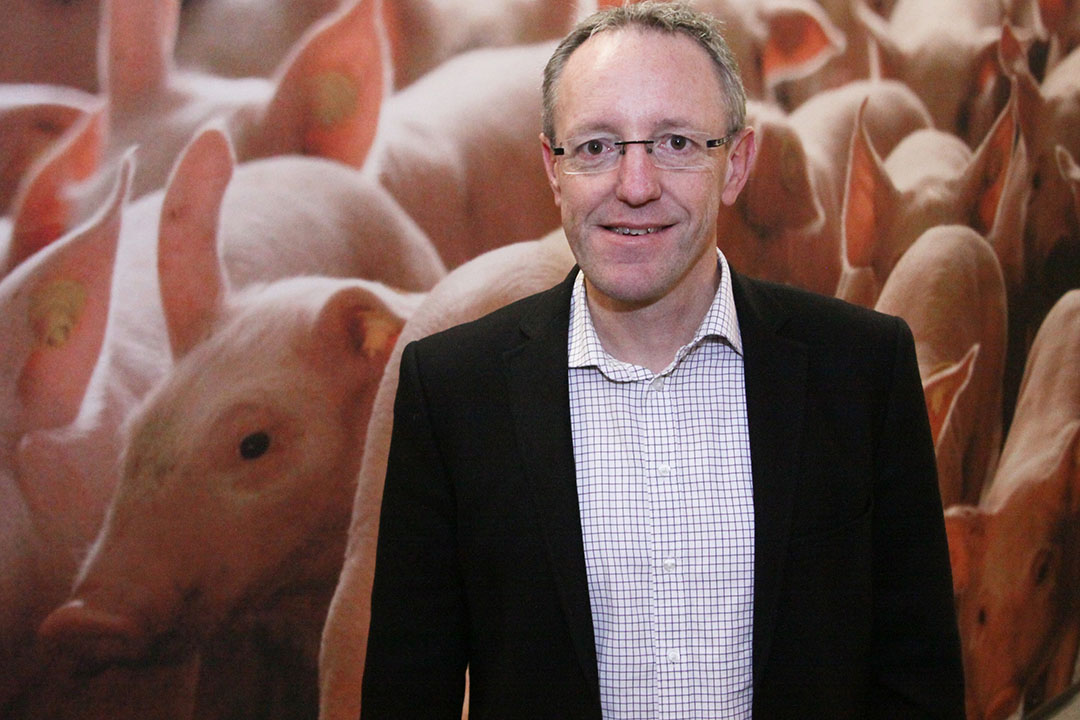Zooming in on raw materials improves knowledge about feed

Feed manufacturer ForFarmers looks at the raw materials that make up pig feed differently than in the past. “Wheat gluten is a better protein source than we had expected.”
Together with strategic partner Trouw Nutrition, compound feed manufacturer ForFarmers has developed a new approach for determining the nutritional value of raw materials. Nutritionists from a compound feed company can get a more accurate picture of the amount of nutrients that a pig can obtain from a feed. The new technology is called NutriPower +. “For the time being this is only being applied to our piglet feed,” says Jan Fledderus, Innovation manager at ForFarmers. NutriPower + has been in use since mid-August this year.
There are a couple of reasons to start with piglet feed first. Of all the groups of animals on a pig farm, piglets are the most sensitive to intestinal disorders. In addition, the maximum amount of copper in pig feed has been reduced, which mainly affects feed for the weaned piglets. Finally, newly weaned piglets still consume relatively little feed. A small deviation from the calculated supply of nutrients on the actual intake has considerable impact.
Adding to the existing method
The trusted CVB protocol for digestion research is still used. But this method has now been expanded to include the digestive potential of piglets. With the CVB method, a pig weighing 40 kg or heavier is the starting point. However, the stomach content of a weaned pig is much less acidic than that of a meat pig. This also has a major influence on the solubility and digestion of amino acids. ForFarmers changed two things when calculating the nutritional value of piglet feeds. The first is that a new classification has been made for fibre in the raw materials. It is no longer calculated based on crude fibre. From now on, newer analysis techniques will be used to determine which fibres are contained in a raw material and to what extent they are soluble in the gastrointestinal tract.
The second change is that the amount of protein, starch and fibre in the various raw materials is divided into a fast, slow and indigestible fraction. This makes it more predictable what a feed actually does in a piglet, according to ForFarmers. From a nutritional point of view, it is important to know how much protein and starch is digested in the stomach and small intestine and how much ultimately ends up undigested in the large intestine. In the large intestine, undigested starch and protein form a food source for various pathogens, such as coli bacteria and streptococci. The compound feed company has analysed 140 raw materials according to their new method of determining the feed value. According to Fledderus, it is now clearer to what extent various fibres are soluble in the pig’s stomach and how starch and protein is digested.
| ForFarmers With sales of 10 million tonnes of animal feed, ForFarmers is the market leader in Europe. The company is active in the Netherlands, Germany, Belgium, Poland and the United Kingdom. ForFarmers has approximately 2,700 employees. The turnover in 2018 was € 2.4 billion. ForFarmers N.V. is listed on Euronext Amsterdam. |
Wheat gluten as a cheap alternative
“We started this investigation for several reasons. In the first week after weaning, we mainly want to support gut health, so that fewer medicines are needed and the farmer’s work is more pleasant. Secondly, we optimise the feed composition and make the effect of feed more predictable. This knowledge can ultimately help reduce feed costs. For example, if it turns out that we can replace a portion of blood plasma with another protein source that has the same effect, the feed becomes cheaper. Money is important because feed accounts for 70% of the costs at a pig farm. However, I personally believe that improving animal health is the most important goal. For example, wheat gluten is considered to be a significantly better protein source for piglets. It can compete with plasma and fishmeal, and it’s quite a lot cheaper.” With this new in-depth insight into the digestion of raw materials, Fledderus advises using three-phase instead of two-phase feeding for weaned piglets. “I prefer three-phase feeding. With three piglet feeds you will be at the maximum copper level for as long as possible. For the first four weeks after weaning, 150 milligrams of copper can be contained in a kilo of piglet feed. Then the maximum is 100 milligrams. Three-phase feeding also saves money. The only downside is an extra feed transition. However, we are seeing more and more customers opting for three-phase feed for piglets.”
No compromise on health
Fledderus explains that the composition of Forfarmers’ piglet feed is not going to change completely. “This is not a revolution, but we can fine tune the feed composition. I can’t go into detail, but we are going to use a certain quality of soy more and others less. Like wheat gluten, sunflower seed meal is being used more as a raw material for piglet feed, both as a protein source and as a source for fibre.” Fledderus claims that with this new method ForFarmers strives to grow piglets faster without compromising on gut health. “In the first week after weaning, the feed is mainly designed to keep the piglets healthy. The choice of a specific starch source and process technology help to make piglets grow fast, without animal health being compromised,” says Fledderus. In addition, he mentions the role of genetics in a new approach to determining the nutritional value of raw materials. ““Genetics is mainly related to the feeding behaviour and feed efficiency of piglets. With our new method we look at the digestion and nutritional value of raw materials. This is tailored to the genetic predisposition of the piglets.”
A step forward
According to Fledderus, “It’s not clear whether our customers’ piglets are doing better than before.” This is just another step forward. It’s difficult to say to what extent our customers are already seeing results. Many factors influence growth. For example, the aftermath of the unusually hot summer in the Netherlands can be seen in the quality of piglets this autumn.”







